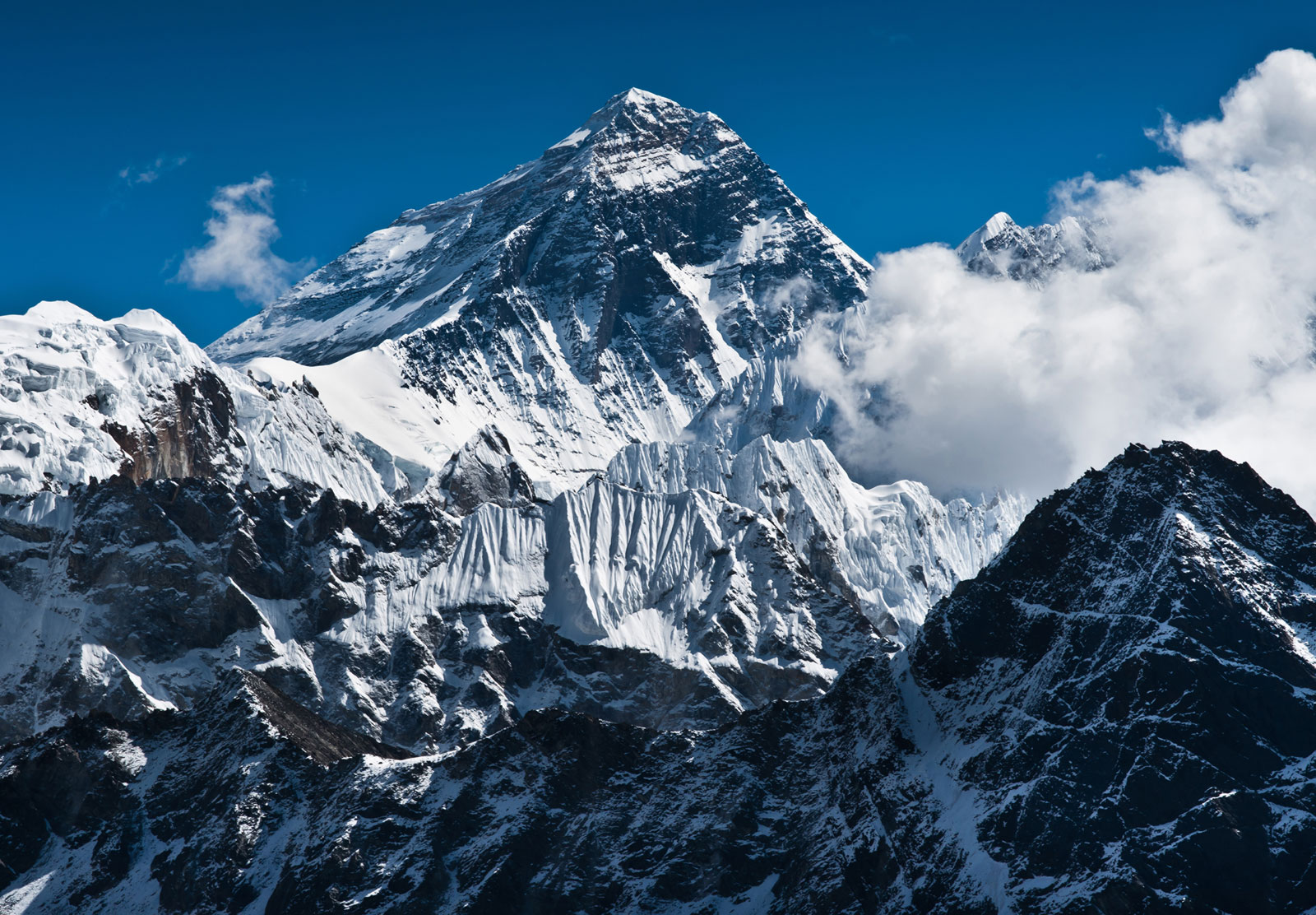All the Mountains, correspond to natural phenomena in which elevations of the earth's crust greater than 700 meters are generated. Having the virtue of being the place where the largest rivers are born and home to the most varied biodiversity on Planet Earth. Find out all about them here.

Mountains
All the mountains, are those that constitute the elevations or prominences of the land, as a result or consequence of tectonic forces or orogenesis. Which refers to the process carried out geologically in which mountains are created or developed, as well as mountain ranges on the surface of the Earth.
It is that these rise to a height greater than 700 meters from the ground surface. They tend to focus on:
- Cordilleras, which are broad series of mountains that are linked together.
- Mountain ranges or mountain ranges, which are the group of mountains in which their summit develops a trace or sawn or broken appearance.
Mountains, in turn, can be small or short in length, or they can extend to several kilometers. Bearing in mind that its elevation corresponds to the answer, in this geological case, of the many natural phenomena existing.
Where is the tallest mountain in America?
The answer to this question suggests locating where is the aconcagua, because the Provincial Park that bears this name is the one that houses the mountain with the highest recorded peak in the Southern and Western Hemispheres. Bearing in mind that this elevation is the one that follows the so-called Hindu Kush-Himalayas (HKH), which are the systems of the Himalayas, located in Asia.
It is that the Aconcagua, is located in the Department of Las Heras, of the Province of Mendoza, in the Argentine Republic. It has a height of 6.962 meters above sea level (masl). It integrates the Andean System mountain range and its coordinates are 32°39'13″ S 70°00'40″ W. Where its geological age corresponds to the Miocene.
Origin of the Mountains
The origin of the mountains It is associated with endogenous forces (orogenesis), which are the internal movements that arise in the Earth's crust. Which are then transformed (generating changes), by various exogenous factors such as:
- Weathering
- Erosion
- Bus Routes
- Sedimentation
- ice ages, among others.
Formation Periods of the Mountains
The periods that define the formation of mountains are:
- Caledonian: It refers to the mountainous elevations that occurred 400 million years ago.
- Hercynian: They are the elevations that occurred 270 million years ago.
- Alpine: It alludes to the mountainous formations produced 35 million years ago, which can be extensive mountain ranges, in which there may or may not be volcanic elevations. Geologically they are taken as young formations that are still rising, with constant activity.
Formation of the Mountains
All the mountains, are formed following the sequence called orogenesis, which takes place after the deformation of the Earth's crust. Taking that they are generally the result of contact or impact between two opposing tectonic plates. Generating a folding of the lithosphere, which is the surface layer found on Earth.
This in turn produces two layers, which are directed in opposite directions (up and down). In this way, it is that the upward elevation, with the various tectonic movements and exogenous factors, ends up forming the mountains.
Parts of a Mountain
The mountains contemplate the following parts, which are:
- Foot or Base: It refers to the support surface of the mountain, constituting its lowest part.
- Top, Peak or Peak: This describes the highest point where the mountain ends, where the value of its highest altitude is taken.
- Hillside or Skirt: It refers to the description of the slope in which the top meets the foot of the mountain.
- Valley: It refers to the part of the slope that is between two consecutive peaks, that is, between two mountains. Forming a short depression between them that is also seen as a sink. Being the separation they experience between one and the other.
Features
Regarding the characteristics, the mountains describe the following:
- They are part of the common formations.
- It is a natural phenomenon in which elevation of the earth's crust occurs.
- At its top one or more peaks may form.
- It has a dimension greater than the hill and its slope is more pronounced than that of a hill.
- They are found anywhere on Planet Earth.
- It has the ability to form even below sea level.
- They can be located in isolation or forming mountain ranges that are also identified as mountain ranges.
- Located above the earth's surface they are taken as part of the terrestrial relief.
- They are home to countless species of animals.
- They are distributed in at least 75% of the total nations of the globe.
- Both the climate of the area where you are and its flora and fauna will depend exclusively on its altitude. Recording diversity in relation to ascent.
- May develop glaciers or snow in higher elevations.
- In its absence it normally develops a broadleaf forest vegetation, while in the upper part it becomes a coniferous forest vegetation. Already for the top the vegetation is completely scarce.
Mountain Climate
The weather in the mountains It is usually linked to two factors, which are:
- Altitude, in which it is located.
- Elevation, describe.
Which means that the higher the altitude of the mountain, the lower its temperature and therefore the lower the pressure. Given that this describes a change of 5°C (5 degrees Celsius), downwards, for each additional kilometer of altitude.
On the other hand, as a mountain is explored, it is common to verify on its ascent that the Humidity It increases with respect to the one that was registered at the foot of the mountain. Where also, the higher you get you can find that the water and humidity in the area are frozen. Also describing a prominently dry air with isolated rains.
Vegetation
The vegetation present in the mountains is completely changing and will depend on both the climate and the place where it is found. Having that throughout all of it the flora is changing and it is according to its ability to adapt.
At the foot of the mountains, the vegetation is always exuberant, however, as the height changes, it becomes stronger due to the low temperature it must withstand. Apart from the fact that the height of the flora is decreasing, that is, the large trees are more towards the foot and the bushes and grasslands more towards the top.
Mountain Wildlife
The fauna that the mountains, it is also according to altitude, where the higher the altitude, the lower the presence of fauna, because its main protection is the flora it contains and this decreases with height.
It is that the most fearsome animals are those found in the areas of greatest abundance of flora. On the other hand, as the altitude increases, the fauna becomes simpler, that is, reptiles, birds and small insects.
Types of Mountains
The types of mountains are the following:
- Regarding height: The hill, which is the smallest and is followed by the medium mountains and the high mountains.
- According to Origin: The volcanic ones, which are consequences of the exit of lava at a high temperature that then cools. Folded, which are the product of a tectonic fault and folded-fractured, which are the result of folding linked to tectonic faults.
- Considering the Grouping mode: In mountain ranges, which join along a length and massifs, which execute their union in a more narrow, compressed or condensed way, which comes to be identified as a circular union.
Population that inhabits them
The results of different studies have shown that approximately 10% of the population that inhabits the globe lives in mountainous areas. Bearing in mind that the more restricted the access to housing, the more precarious the quality of life of the inhabitant.
Where apart, the physical requirement that these people must have is stricter compared to the others, because height is not a good companion, in relation to the performance that the human organism must have. The higher the altitude, the lower the oxygen and that influences others, apart from the fact that the caloric requirement must be greater, in order to help counteract the cold to be endured.
The experts clarify that in the mountainous places, they have the ideal place to settle, the valleys, because they provide the protection of the slopes, they always have rivers with which the water is guaranteed and the land is more fertile, with nutrients and humidity.
Importance of the Mountains
The importance of mountains lies in the fact that each one of them, their presence is of extreme relevance, so that the globe develops its wide biodiversity of species. Where in addition another variable of great notoriety, is that it controls the climate and the incidence of the winds.
It serves as a barrier against rising and/or flooding, blocking the passage of fearsome hurricanes. Together with these, it is found that they are a powerful source of water, because the source of the major rivers comes from the mountains.
But just as it has immense benefits, it can also cause disasters, when you have mountains that do not have vegetation and are also unstable. Causing landslides that destroy everything in its path, with various Types of environmental impact and generally loss of human lives.
Highest Mountains on Earth
The highest mountains according to each continent are the following:
- Asia: The highest in Asia is Everest (8.848 masl), followed by K2 (8.611 masl) and Kanchenjunga (8.598 masl).
- America: The highest in America is Aconcagua (6.962 meters above sea level), followed by Nevado Ojos del Salado (6.891 meters above sea level) and Mount Pissis (6.792 meters above sea level).
- Africa: Kilimanjaro (5.895 meters above sea level) is the highest in Africa and is followed by Mount Kenya (5.199 meters above sea level).
- Europe: In Europe, the highest is Mount Elbrus (5.652 meters above sea level), then Mount Dij-Tau (5.205 meters above sea level) and Shjara (5.200 meters above sea level).
- Antarctica: In Antarctica the highest mountain is Vinson Massif (4.895 masl), then Mount Tyree (4.852 masl) and Mount Shinn (4.661 masl).
- Oceania: La highest mountain in Oceania is Puncak Jaya (4.884 masl), then there is Puncak Trikora (4.730 masl) and Mauna Kea (4.205 masl).





